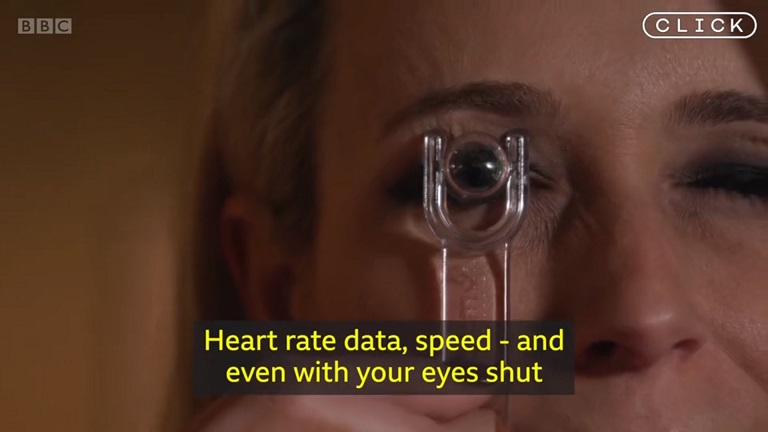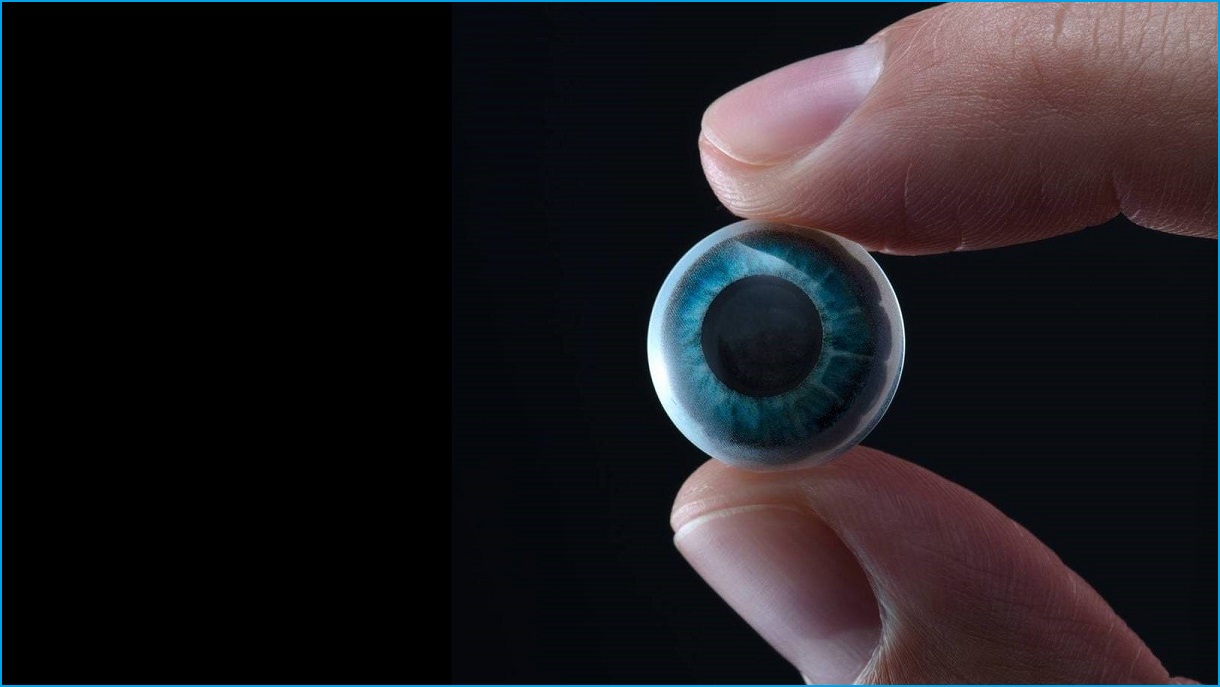Contact lenses could be the next step for wearable tech but you won't be buying them any time soon.
US tech company Mojo Vision has recently started showing off prototypes of contact lenses that it claims can keep you productive "without burying your face in a screen or getting distracted by a mobile device".
Using augmented reality (AR), the Mojo lens provides much the same features as a simple smart watch (except it's directly attached to your eyeball).
Weather alerts, traffic information, and to-do lists in a basic green vector display can be summoned with futuristic eye-tracking controls.
For people with vision impairments, the lenses will also supposedly use computer vision and a graphic display to highlight or magnify hard to see objects – and it could even help you see in the dark.
But not yet.
Many of these features are unproven and the lenses are still waiting on regulatory approval before they can be tested by the public, so hands-on reports of the smart lenses have been done by people holding a prototype of the lens up to their eye and watching a pre-recorded demonstration.
That demonstration involves projecting data through a tiny display directly into the eyeballs of willing journalists, who also get to try on a VR headset to experience a simulation of the lens’ future features.
The Mojo smart lens is supposed to rival augmented reality devices like the Microsoft Hololens or Magic Leap – bulky headsets that are still far from ubiquitous consumer devices.

The BBC’s Lara Lewington was impressed by the Mojo lens demo.
However, not everyone is convinced that the Mojo Lens will be able to deliver what it promises.
CEO and co-founder of Australian AR/VR company Virtual Method, Dave Francis, is skeptical about the vision-improving features touted by the Mojo team and hype-producing journalists.
“It’s nothing more than a heads-up display right now that can put text in front of your eyes that will stay there no matter where your eyes look,” Francis told Information Age.
“AR needs a camera – unless it is tapping into your neural-visual cortex – to do its depth perception and to create visual understanding and real-world anchoring.
“So unless you can put a camera on the lens, stream massive amounts of data to it and have an insanely powerful chip in it that is refreshing a micro-lens array in nano-seconds to match the twitching of an eye and keep an augmented scene relative to your 12 o'clock, we’re a long way off.”
Mojo Vision has a roadmap for its lens with speculative timings for a fully functional prototype and first product within the decade.
The company has raised $108 million since it was founded in 2015, according to Crunchbase.
Mojo Vision’s VP of product and marketing, Steve Sinclair, is unsurprisingly optimistic about the future of the product, telling Fast Company, “we’ve tested pretty much everything outside the lens, and now it’s all getting pulled together in the lens”.
But there are still years’ worth of clinical trials remaining before Mojo’s vision of consumer-ready augmented contact lenses becomes a reality.










